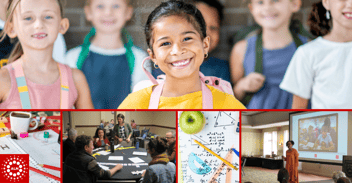
Establishing a Feedback Culture
Use Student Work as Feedback
We are in the business of being responsive.
As educators we strive to establish a thriving feedback culture in our classrooms enriched by constantly looking at formative assessment data and responding.
When armed with evidence of student thinking, we can approach teaching like a constant rapid cycle of inquiry. What worked? What didn’t? How can I respond next to push my students’ thinking?
The more our systems support us in being responsive and in driving our instructional decisions with evidence from student thinking, the more learning and growth for all!
We can infuse a feedback culture in our adult teams when we choose to look at, sort, and respond to student work regularly with our colleagues and coaches.
There are so many ways to start building this into a habitual feedback routine in our teams:
- Find a colleague who teaches the same grade and create a weekly or bi-weekly meeting when you look at students’ work together.
- Infuse the Work Sort Protocol into your PLC or other collaboration meetings.
- Ask your coach or interventionist to do a monthly work sort together with a set of your students’ work.
- Plan to sort the High Leverage Concepts (HLCs) Assessment tasks three times a year with other educators at the same grade level as you.
By making space for formative assessment data to inform our practice and decision-making with our colleagues, we are holding ourselves accountable to using feedback (in this case, our students’ thinking) to constantly improve our instructional decisions. The more we do this, the more comfortable we get with the rapid cycle of inquiry. What did I do that worked? What didn’t work? What instructional decision can I make next that may support my students’ learning even more?




.png?width=352&name=ALN%20Hero%20Images%20(32).png)
